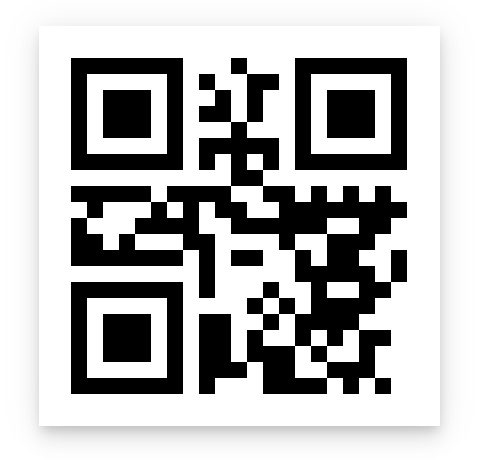QR Payment
EMV QRCPS Compatible
How do QR code payments work?
QR code payment is a contactless payment method where a payment is performed by scanning a QR code from a mobile phone (native in camera or via app). This is an alternative to doing electronic funds transfer at point of sale using a payment terminal. This avoids a lot of the infrastructure traditionally associated with electronic payments.
Contrary to linear barcodes that can only be read by a laser barcode scanner from paper, QR codes can be scanned from both paper and screens. That is why you see QR codes in some online stores and apps.
To process a QR code, you need a smartphone or tablet with built-in camera.
Both iPhones and Android smartphones can scan QR codes directly from the main camera app, as long as it is using the latest iOS or Android software. You simply open the camera and point it towards the QR code, which will immediately recognize it and open a push notification requiring you tap it to finish the relevant operation.
To use a QR code payment the consumers scans the QR code displayed by the merchant with their phones to pay for their goods.
There are two different kind of QR code modes that Hips supports:
-
Merchant Presented
The merchant displays the QR Code and the customer uses their mobile
device to scan the code. -
Customer Presented
The customer displays the QR Code on their mobile device and the
merchant uses an optical scanner to read the code
There are two different kind of QR code types that Hips supports:
-
Static QR code
Static QR codes are static pre-printed codes, normally on a sticker, that you attach to a point-of-sale location. Static codes are a quick and cost effective solution to get started. -
Dynamic QR code
Dynamic codes are codes that includes the amount and other transaction data direct in the code. Dynamic QR codes are more expensive to setup since they require some kind of display. But on the other hand, merchant presented dynamic codes support offline mode for some payment methods.
There are two different kind of QR payment flows that Hips supports:
-
PayFlow (Recommended)
In this flow Hips waits for an order being submitted with the amount before the customer can make any payment. This solution is suitable for POS systems that have a full integration to Hips. In this mode tipping can be enabled and will be added to the pre-sent order amount. Read more here: Integration -
PrePayFlow
This flow allows the customer to pre-send a payment without any order created, like a cash advance. This solution suits in unattended mode where there is no way for the machine to send the amount in advance, or in attended situations where there is no direct integration to the POS system. Read more here: Integration
Characteristics of QR codes
There are many variations of one-dimensional and two-dimensional barcodes, a lot of which look very similar. The QR code is just one of the two-dimensional designs that happens to be the most frequently used code to scan with smartphones.

QR code example
The QR code stands out with its three small squares placed in the lower and upper left corners and upper right corner. The overall code has a square shape composed of a matrix of small squares. The number of small squares per side can vary, e.g. 33 x 33 or 177 x 177.
The fewer squares, the less information the code contains and vice versa for more squares. Because information is contained in two directions, it can hold a lot more data than a one-dimensional barcode. A QR code composed of 177 x 177 squares can, for example, contain 4,296 characters or 23,648 bits.
Since QR codes contain more data, they allow for encryption that is useful for payment processing.
How can merchants accept QR code payments?
There are different ways you can accept QR code payments as a business. First of all you need to set up a Hips merchant account. Then you need to decide if you want to use static or dynamic QR codes.
Should you choose to go for Merchant presented mode and static codes you need to display that code for the customer in some way. A normal approach for this is with pre-printed stickers that you put in the point-of-sale location (countertop, taxi head rest or on a vending machine).
Some payment methods (as now WeChat Pay) requires dynamic codes or customer presented mode. Dynamic codes require you to be able to display a QR code that updates every 10 seconds, so for this you will require some form of display, or a payment terminal that supports this (Miura M020 or Verifone P400).
As long as you do not require WeChat Pay we recommend you to go with Merchant presented mode and static codes.
Updated 7 months ago
